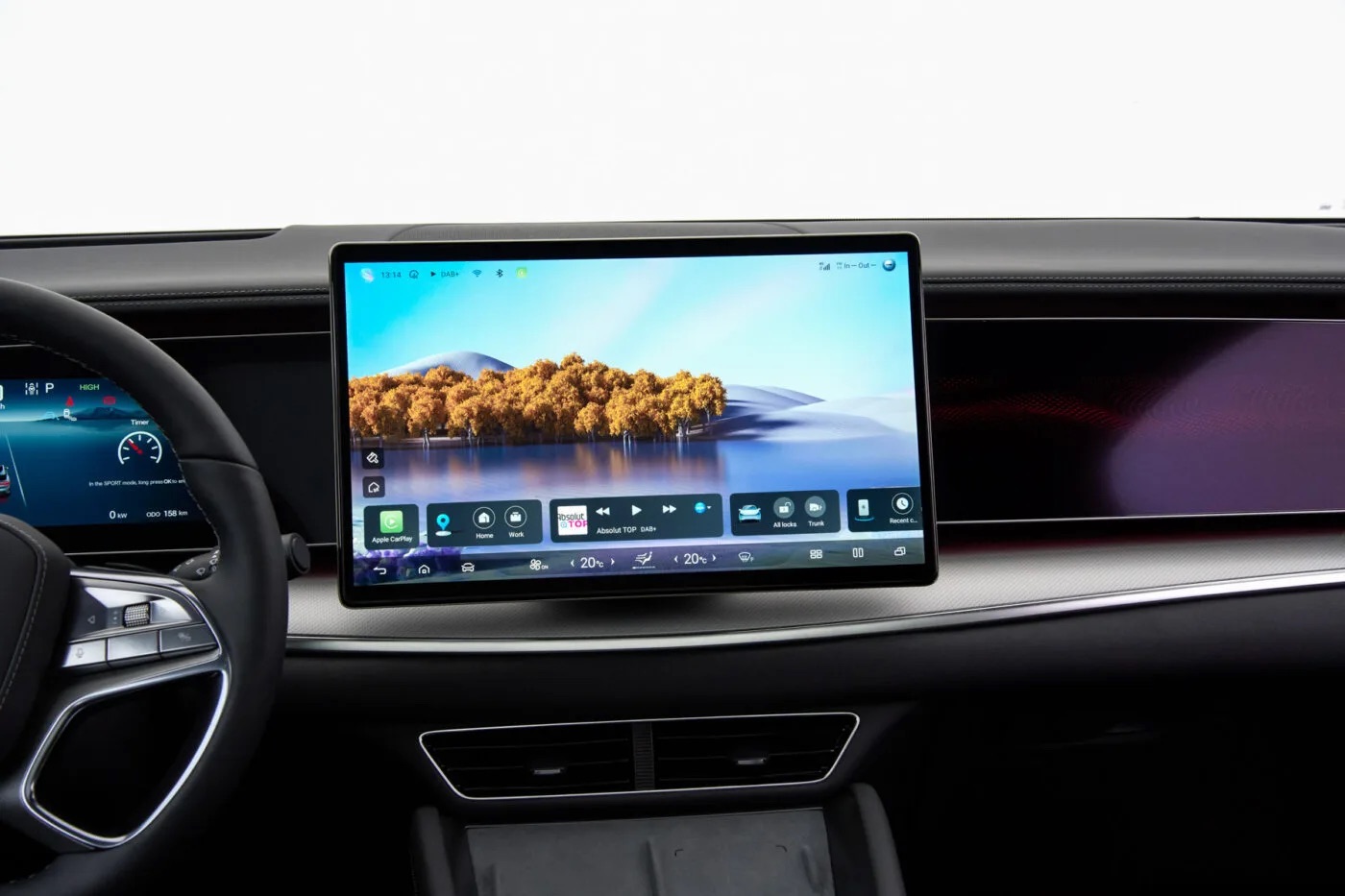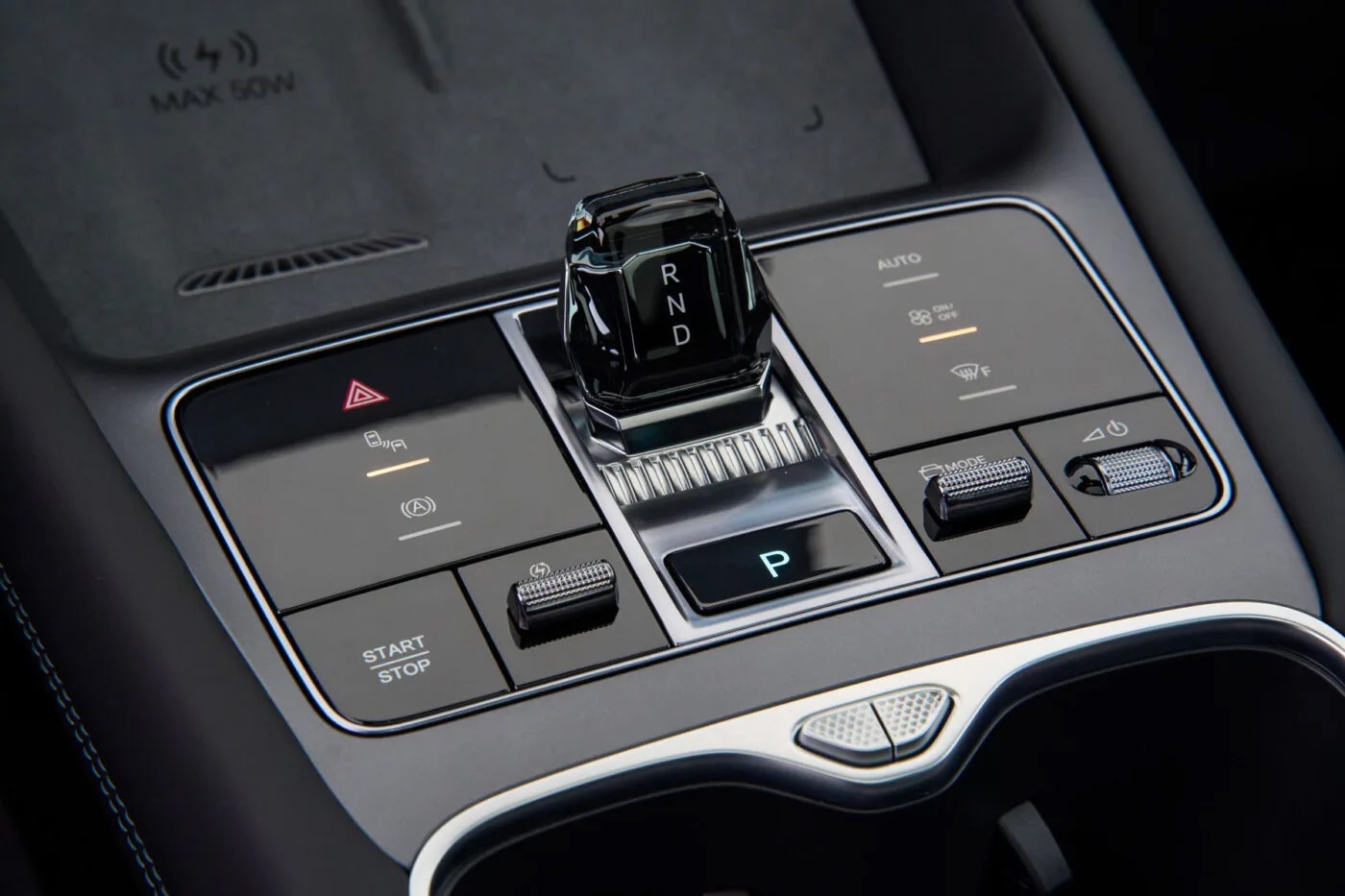
First drive with the Sealion 7: BYD is slowly getting serious
Two years after its launch in Europe, BYD has no fewer than seven models on offer: six fully electric and one plug-in hybrid. However, the first six cars have not been as successful as hoped, and BYD failed to meet its high expectations in Europe despite outstanding sales in China. That was partly due to the sales partners, where fundamental changes have already been made.
However, the BYD models themselves also missed the mark with European customers. Few customers are willing to spend around 70,000 euros on a Han or Tang for a brand with no heritage or basis of trust. Even the cheaper electric cars were not sufficiently cheap to be convincing as an alternative. Whether premium or volume model: no BYD has yet been able to convince with fast charging – while Tesla has achieved respectable charging times of 20 minutes for the Model Y with a BYD blade battery.
That could now change, as BYD has allegedly listened to its customers: “Many have asked for a powerful SUV that is also environmentally friendly,” explained Ralph Kaiser, Head of Communications at BYD Europe, at an event in Offenbach near Frankfurt in Germany. At the same time, the BYD Sealion 7 should look attractive and also offer a high level of driving comfort, according to the announcement. The marketing department, at least, does not want to address the mass market directly but rather reach customers “who are looking for something extraordinary.” And the Sealion 7 should not only meet these requirements but exceed them.
BYD with bold claims
But can the car keep up with such strong claims? The answer after the first, if relatively short, drive is a clear yes and no. The route from Offenbach to the Taunus and back was unfortunately too short to be able to make any reliable statements about energy consumption and range. Consequently, we have yet to be able to try out the significantly improved fast charging system. BYD is expected to make further improvements in some areas, but the Sealion 7 is already impressive in others.
Before we get to the driving impressions, let’s take a quick look at the most important information: the Sealion 7 is 4.83 meters long (eight centimetres longer than a Model Y), has an 82.5 or 91.3 kWh LFP battery, depending on the version, and an all-wheel drive with up to 390 kW. An internally developed 8-in-1 drive unit is installed at the rear, which also houses the on-board charger. In the all-wheel drive models, a simpler 3-in-1 unit is installed at the front, which is an induction motor. The drive unit on the rear axle is a permanently excited synchronous machine that rotates at speeds of up to 23,000 revolutions. According to BYD, this is the highest value for a series-produced electric car, but it was chosen for technical reasons and not for the record itself. With the high-rev concept, BYD wants to keep the compromise between dynamics and top speed as small as possible while also being able to dispense with a two-speed gearbox.















The rear motor is identical in all three variants and delivers 230 kW. That is also the drive power of the ‘Comfort’ model, delivered with the 82.5 kWh battery and rear-wheel drive – in this case, with a WLTP range of 482 kilometres. In the ‘Design AWD,’ this battery is combined with a second electric motor on the front axle. With a total of 390 kW, acceleration time is reduced from 6.7 to 4.5 seconds (also stated on the trunk lid under the model lettering), but the range is also reduced – to 456 kilometres. If the 390 kW drive is combined with the 91.3 kWh battery, the whole thing is called ‘Excellence’ and achieves a WLTP range of 502 kilometres. This top battery can also be charged with up to 230 kW. Charging the battery from 10 to 80 per cent should take 24 minutes. With the smaller battery, the maximum is 150 kW and 32 minutes.
BYD (naturally) provided the top-of-the-range ‘Excellence’ model for the first test drives. In Sport mode, the car accelerates really quickly – BYD even claims to have undercut the certified 4.5 seconds in its own measurements. We cannot say for sure whether this is really the case. What is clear, however, is that the pedal characteristic has been designed without the enormous electric punch right from the start. It means the Sealion 7 does not respond as directly to the accelerator pedal as other electric cars but accelerates with similar power. What is very pleasant is that the response behaviour changes significantly with the driving modes. If you prefer a smoother throttle response in everyday driving, you can change this with a small rocker switch in the centre console.
The driving modes are set to the right of the central gear selector lever, so they are not easy to reach. There is another rocker switch to the left of the selector lever, which can be used to choose between the two recuperation levels. These also differ significantly in terms of tuning, but personally, I would have liked more levels – from complete coasting to one-pedal drive. However, I would file this away as a personal preference rather than a real criticism.
Overall, the Sealion 7 is impressive on the first few kilometres. The drive and recuperation do their job well, and the suspension is also well-tuned. On the motorway, the Sealion 7 rolls along in a very relaxed manner, while the interior is pleasantly quiet at 120 kph thanks to the various insulation measures (BYD mentioned 45 of them). And the BYD didn’t lurch through the bends on the way up the Feldberg. Although the steering is designed with little resistance (typical of many Asian cars), it remains precise enough in bends. We wouldn’t have expected a sports car from an SUV weighing 2.4 tonnes – at 2.2 tonnes, the rear-wheel drive vehicle is slightly lighter, but not fundamentally so.
We wouldn’t read too much into the energy consumption displayed by the on-board computer on the 85-kilometre drive. Depending on the driving situation, it was between 19 and 25 kWh/100 kilometres. That would roughly mean a range of between 365 and 480 kilometres. However, we lost 116 kilometres for the 85 kilometres in the displayed range (from 465 at 91 per cent to 345 at 68 per cent). As we try out many things during such short test drives, from acceleration and cornering to recuperation behaviour, the consumption itself is not really meaningful, but rather a rough classification: and that is that the Sealion 7 is neither super economical nor extremely power-hungry.
One area where BYD could improve is the charging software. Firstly, the filters for the charging station search in the sat nav are currently rudimentary; you can only choose between ‘Any’ and ‘>=50 kW’ for the charging speed – filters ‘150 kW or more’ would be desirable to be able to utilise the car’s capabilities. The second filter concerns the charging connections. Here, you can filter from six standards – including those the car cannot use with its CCS2 interface. Type 1, CCS1 or GB/T simply do not play a role in Europe. Meanwhile, it is not possible to filter by operator or charging card.
Software still needs improvement
The charging planning could also do with a little more care when programming. Although the Sealion 7 can add charging stations to the route with just one click, the simulated route from Feldberg to Berlin only included one charging stop for the vehicle, which was roughly 85 per cent charged. The proposed charging park also appears to make sense, with six CCS charging points with up to 400 kW. However, there is no further information on the charge level at which you arrive there, how long or up to what charge level you have to charge to reach your destination. It is also not clear with which charging services the suggested charging station can be used – as mentioned, there is no filter. The frustration of inexperienced customers who set off with their new electric car without prior knowledge but fail in front of the fast charger could be avoided with better software.
In many reports on the Sealion 7, you will probably read that the indicator sounds like a warning message. The car beeps when the indicator flashes, similar to the sound warning system in other models, only a little quieter. However, this is not a real point of criticism: a much more traditional click can also be selected in the menu.
Apart from such software shortcomings, the Sealion 7 made a very good impression on the first few kilometres. The ride comfort is good, the seats are comfortable in both the front and rear, and despite the dynamic roofline, the space is adequate. The boot is also sufficiently large with 520 litres and an additional sub-trunk; with the rear seat backrests folded down, almost 1,800 litres fit into the Sealion 7. All variants also have a 58-litre frunk under the front bonnet. The rear-wheel-drive model can tow a maximum of 750 kilograms, while the all-wheel-drive versions have a towing capacity of up to 1,500 kilograms. A roof load of 75 kilograms is also registered.
Prices & conclusion
What becomes clear with the Sealion 7 is that BYD has realised that they can’t charge just any price in Europe. The base model costs 47,990 euros, the small all-wheel-drive model is available for 53,990 euros, and BYD is asking 58,990 euros for the ‘Excellence’ top model. In commercial leasing (48 months, 10,000 km/year), the Sealion 7 is available for 455 euros, with the top model costing 499 euros. The Sealion 7 is thus not cheap, but it is not cheaply made either. In the market environment, these prices – measured against the battery size – are respectable.
BYD still wants to score points not only with the price but also with quality and appearance. The first impression is that the good workmanship has been successful. However, it remains to be seen next year whether customers will agree.
| Comfort RWD | Design AWD | Excellence AWD | |
|---|---|---|---|
| Drive | RWD | AWD | AWD |
| Power | 230 kW | 390 kW | 390 kW |
| Torque | 380 Nm | 690 Nm | 690 Nm |
| Acceleration | 6.7 s | 4.5 s | 4.5 s |
| Top speed | 215 kph | 215 kph | 215 kph |
| WLTP range | 482 km | 456 km | 502 km |
| Battery | 82.5 kWh | 82.5 kWh | 91.3 kWh |
| Charging power DC | 150 kW | 150 kW | 230 kW |
| Charging time DC 10-80% | 32 min | 32 min | 24 min |
| Price (in Germany) | 47,990 euros | 53,990 euros | 58,990 euros |




4 Comments